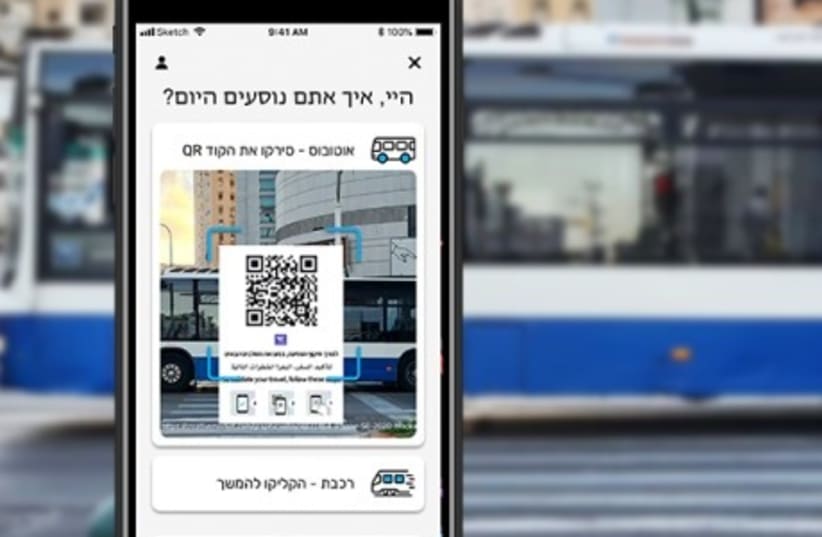When you get on a bus or train in Israel, how do you pay the fare? The answer to that question has changed several times since Egged started a decade ago phasing out the punch cards that riders would buy in cash from the bus driver while in transit.
Since last month, riders can now pay via smartphone app, a long-awaited upgrade from the physical Rav Kav cards that have been used for more than a decade. Now, a user can simply use the app to scan a QR code placed on the bus and pay automatically. The apps are currently only available for travel on buses, but are expected to be available on Israel Railways and the Jerusalem light rail as well in the coming months, according to the Transportation Ministry.
However, while the apps streamline the payment process substantially, there are some quirks that users may find confusing.
First, there are four different applications that are available: Rav-Pass by HopOn, ANY-WAY by Isracard, a payment option available in the Moovit app, and a separate product developed by the Transportation Ministry, called The Station. Each of the apps is available in both Hebrew and English.
But the confusion only starts there, explained Ofer Sinai, co-founder of HopOn, the company that created the Rav-Pass app. "There are two ways to pay. You can pay for rides directly through the app, but you can also still add money to "top-up" your pre-paid Rav Kav card using the system that previously existed, which is still in use. The problem is that those two systems have different pricing systems, and certain rides may be cheaper if you use one system than the other."
Confused? "The Rav Kav system has many different types of prices for different rides in different places around the country, with discounts based on how much you pre-pay," Sinai said. "For the app, we created a simple and consistent pricing structure in which there are just six different pricing levels available for each user, depending on the distance of the trip. However, for the time being, both of those systems are in use."
So, for example, a rider in Jerusalem might find that an intracity bus costs NIS 5.90 using the app, but just NIS 4.70 when using the pre-paid Rav Kav card. But a trip from Jerusalem to Tel Aviv will cost less using the app.
"The system allows for people who don't have smartphones, but it's extremely complicated for the user," Sinai said. "So we created a feature for our app that none of the other apps have - a calculator to help the user figure out whether it is cheaper to pay via the app or with the Rav Kav."
Rav-Pass is the only one of the four apps that allows for users to compare prices and pay via the old Rav Kav system. Perhaps that is not surprising, as the Rav Kav payment website is also operated by HopOn.
Sinai is aware of the problems presented by the two competing payment systems, but he believes that it ultimately provides an opportunity for the consumer. "Here is a way that riders can save money of their travel, saving up to hundreds of shekels per month, due to an inefficiency in the system," he said.
Exposing that opportunity may be what has helped the Rav-Pass take an early lead over the other apps. Transportation Ministry stats from the program's first month indicate that 40% of the 275,000 rides paid via smartphone were made via Rav-Pass, more than any of the other three options, Sinai said. And 50,000 users have already used the price calculator to find their most inexpensive option, he added.
Sinai co-founded HopOn in 2013 when he and a friend commuted by bus every day between Petach Tikva and Tel Aviv, and grew frustrated at how disorganized payments were in the bus industry. Between the inconveniences of fumbling around with cash and the time it took for bus drivers to handle the transaction, the two found that each ride took 20 minutes longer than it needed to. The company has become a leader in the industry despite raising just $4 million in funding over its history.
